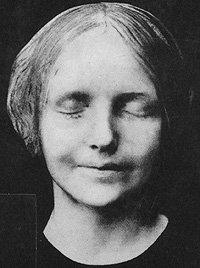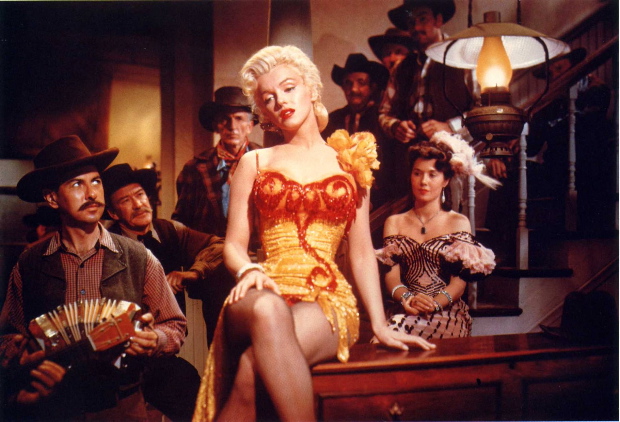L'INCONNUE DE LA SEINE
http://www.mardecortesbaja.com/blog/_archives/2009/6/21/4227945.html

Do you know about her?
The story goes like this . . .
In the 1880s the corpse of a young girl was found floating in the Seine. The body showed no marks of violence, so it was assumed the girl committed suicide. She was never identified.
Apparently a doctor working in the Paris morgue was so taken by her beauty that he made a death mask of her face. Somehow copies of the death mask started circulating -- Romantic artists in particular fell in love with it and hung it on the walls of their studios. When people couldn't get copies of the cast they settled for photographs of it, and some artists even made new sculptures based on the photographs. It became a cult object. L'Inconnue de la Seine -- the Unknown Girl of the Seine, as she came to be called -- was mentioned in a number of works of 20th Century literature.
However . . .
. . . modern experts say that the original cast could not possibly be a death mask, especially one taken from a corpse which had spent any time in water, because it's too detailed and the skin is too firm and full over the skull. They say it was made from a living model, probably around sixteen years of age.
The true model, like the original corpse, has never been identified.

André Bazin said that a film image has the same relationship to the reality it records that a death mask has to the face of the corpse it's taken from -- a kind of shared "identity" based on a strict point to point correspondence. Glamorizing a dead girl by worshiping a cast of her face may seem like a Victorian eccentricity -- but in our time we worship the images of long-dead movie stars in just the same way. The photographic "casts" of their faces and forms, in motion no less, still have glamor . . . and it's partly the glamor of loss, of death.

The "death mask" of L'Inconnue de la Seine had a certain false piquance supplied by the fact that it was, in fact, a life mask. ("So alive -- even in death!") It's a different kind of object in our time, because the living girl whose face it reproduced has long since died. But she was a star in her time -- and remains one, like Judy Garland, Marilyn Monroe . . . and, in her own more sublime and serious way, Neda.
DoxDoxDox
segunda-feira, 11 de abril de 2011